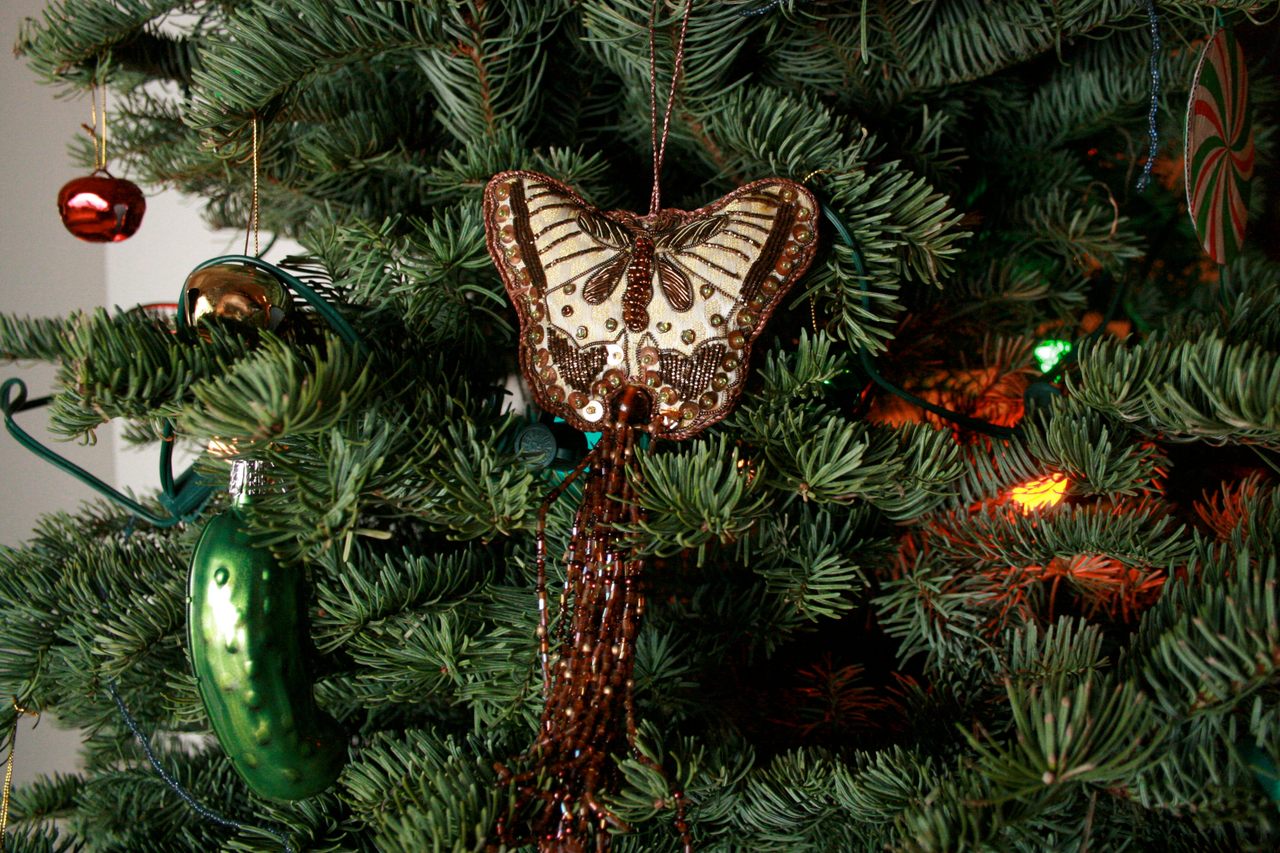The Mysterious Tradition of Hiding a Pickle on Christmas Trees
Find a pickle, win a special gift.
Each December, millions of people dust off Christmas ornaments and hang them on their respective trees. They carefully place glass baubles and string lights and choose between novelty ornaments. And a small percentage of these people, following a German tradition, hang a Christmas pickle, or Weihnachtsgurke.
They don’t just hang a pickle ornament, though. Followers of this tradition hide the tiny, green pickle within the tree’s many branches. On Christmas morning, the first child to find the pickle receives an additional gift, or the privilege of opening the first present. Some parents even dole out money. Atlas Obscura’s own Tyler Cole grew up in a military family, and lived in Germany twice. His mother picked up the tradition and hides the pickle every year. To this day, the finder receives five dollars.
But this supposedly German tradition, which is particularly popular in the Midwestern United States, is often met with raised eyebrows by Germans. “In college German class, I smugly told my teacher that I knew Germans had a Christmas pickle tradition, and she had no idea what I was talking about,” Cole says. “At the time, I chalked it up to my bad German, but it might be because Germans also don’t do this pickle thing.”

It seems that Germans don’t do the pickle thing at all. Cole says the pickle is hard to find in places where one would expect it to be ubiquitous (such as the Berlin Christmas market). Within Germany, it’s so puzzling that German newspapers have published articles explaining this tradition that’s supposedly theirs. In fact, a 2016 survey found that 91 percent of Germans had never heard of the Christmas pickle, and only two percent celebrated it. So if it didn’t come from Germany, where did it come from?
One legend holds that the tradition started with John Lower in the 19th century. A Bavarian soldier fighting in the American Civil War, Lower fell deathly ill while being held at the Andersonville Prison Camp. Near his deathbed, he asked for a pickle, a request that cured him entirely. After that, Lower hung a pickle from his Christmas tree every year.
Another belief holds that poor families in Spreewald, Germany, a region known for its pickles, once hung them on their Christmas trees in the absence of other accoutrements.

The most plausible explanation, though, is that the Christmas pickle was developed in the late 1800s as a marketing tool. Woolworths began importing glass baubles and other decorations from German towns such as Lauscha. Selling a legend proved far easier than selling merely a decorative vegetable.
But residents of Berrien Springs, Michigan—the Christmas pickle capital of the world—may tell you a more whimsical story, which dates the Christmas pickle to the Middle Ages. Two Spanish boys headed home during the holidays stopped at an inn for the night. Inexplicably, the grumpy innkeeper stuffed the two boys into a pickle barrel. When St. Nicholas (a forebear of Santa Claus) coincidentally popped by that very same inn, he sensed trouble, tapped on the barrel with his staff, and rescued the two boys from being pickled to death.
Whatever the explanation, the Christmas pickle tradition lives on in trees near and far. Even Germans seem to be warming up to this amusing tradition. As the Hamburger Morgenpost put it: “Although it seems a little curious to hang a glass cucumber between tinsel and straw stars, many German families have now recognized the advantage: The annual ‘Who-may-first-open-a-gift’ discussion is dropped ....”
Gastro Obscura covers the world’s most wondrous food and drink.
Sign up for our email, delivered twice a week.


































Follow us on Twitter to get the latest on the world's hidden wonders.
Like us on Facebook to get the latest on the world's hidden wonders.
Follow us on Twitter Like us on Facebook